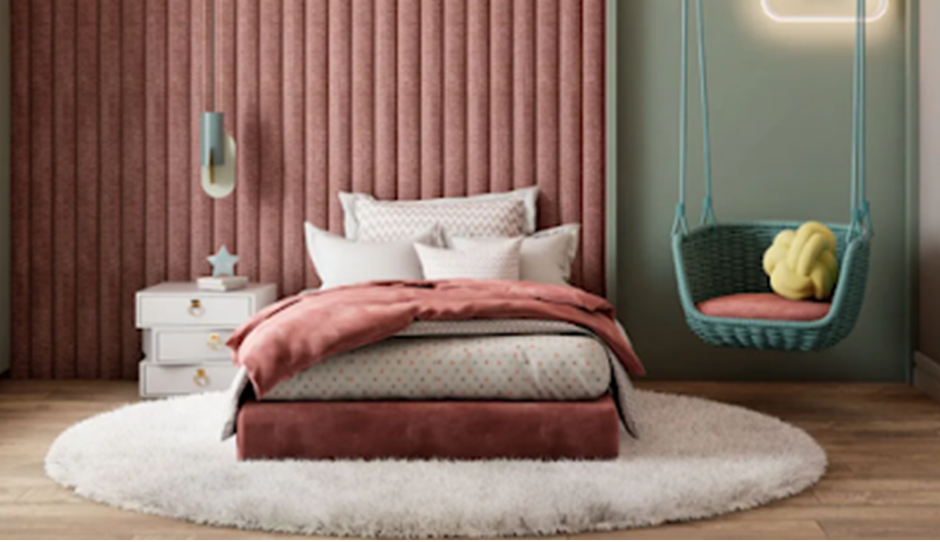INTERIOR DESIGN FOR CHILDREN WITH AHDH
Arch. Brunilda Basha
As we already know, children with ADHD are hyperactive, have difficulty concentrating, and this nature of them affects social, academic interaction as much as behavior at home. In the case of hyperactive children/people who may have behavior different from the rest of us, it is not enough simply to want to understand or not to discriminate against them. Their non-discrimination and acceptance like any other person is supposed to be undisputed already.
The discourse should be raised on the methods we can all come to their aid. My message goes out in particular to all architects, artists, parents and teachers. The surrounding environment is very important for everyone and should serve everyone the best. as a child or adult, hyperactive, autistic or a person in a wheelchair. It may seem unintal, but it is impossible to separate the life and learning activity from the physical environment in which we all are.
Creating a healthy space where children can feel safe is key to their progress. Since the house is the first most important environment and can make a big difference in the lives of children, I would ask parents to create a healthy environment for children with ADHD, creating a well organized and structured place to live and play comfortably.
Every child is unique and every child can respond to ADHD challenges differently, so there is no fixed or standard design that can respond to every case, or it can work in every family absolutely. However some general advice could include:
- Create a relaxing setting. Often the messy spaces give us a sense of nervousness and load even those who don’t have AHDH symptom, so get to know your child well; What are the things or things that create discomfort and eliminate them as much as possible. Remove electronic devices, toys you don’t play with or like. Replace the drawers with shelves, put hooks on the wall where the garments can hang.
- Use a minimalist style, as little furniture as possible, or loaded details. A room filled with furniture, paperwork or accessories can be an overload for the mind, while simplification of accents in “a monocromatic colour scheme” will minimize distraction.
- Colours:An important role has the colours used on the walls, in the bed cover, the scars, the decoration of the room. Foreground: The colour white is cold, harsh and can cause anxiety. Red is a high-energy colour that stimulates a child’s blood pressure and contributes to stress and aggression. To reduce anxiety, choose warm earth tones. Blue colours are known for slowing heart rate, lowering breathing rates and encouraging calm and concentration. Generally, stick to pastel, soft, earthy colours (green, beige, brown) and avoid primary colours.
- Light: The use of a soft light affects the person’s calming. Lighting can be achieved using hanging or layered lighting devices that absorb light.
- Creative/relaxing spot. Locate a part of the wall for the child to list the things he or she has to do, or if she needs to express her to have the opportunity to paint and write. It could be a blackboard you could write on with white pencil/chalk. Creating a space to be a little different from other members, relax, or read a book helps them when they’re angry. It could be a couch near the window, or a tent in the corner of the room.
- Materials: It has been proven that the materials used are quite relaxing if made up of soft textile. Instead of a rough carpet you can use carpets, on wooden chairs you can place a thin sliding mat on it.
It is important to understand the fact that every person should be able to easily navigate in any environment, such as home, school, various institutions, and those places come to his aid in dealing with our anthropopathic and emotional nature more easily.

Ark. Brunilda Basha “A house without books is like a body without a soul.” —Marcus Tullius Cicero Books are one of the most powerful tools for gaining spiritual wealth because they encompass some of the most eloquent expressions of everything within human capacity to know. The human awareness of such universal notions provides a metaphysical …

Ark. Brunilda Basha The reality in which we live, as a self-propelling force for unconscious actions, sweeps us away by activating all the necessary mechanisms to respond to it. It often astonishes us, hurts us, and provides us with impressions, emotions, and temporary or permanent feelings that leave visible traces. Humanity is an extraordinary phenomenon …


